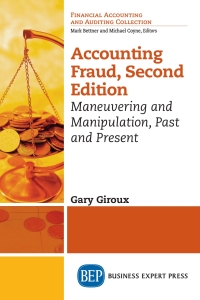Question
Case Study: An As-IS process is given below for a transport service. Scenario: The passenger calls the transport service to request a ride from destination
Case Study: An As-IS process is given below for a transport service.
Scenario: The passenger calls the transport service to request a ride from destination A to destination B on a certain date and time. The transport offices customer service representative checks whether there are any cars and drivers available in the said schedule for the requested destination. If not, then the passenger is informed that the requested service cannot be provided in the given conditions. And if a car and a driver is found, the passenger is informed of the cost and the driver and car details and requested to confirm. If the passenger has any issues, the passenger can cancel the request at this point. If not, the passenger confirms and makes a payment of 50% to the transport office. The driver is then notified and the ride details are shared with the driver. On the date of travel, the driver arrives at the passenger's requested pick-up point, and drives the passenger from there to the destination. Upon reaching the destination, the passenger makes the rest of the 50% payment to the driver. The passenger and the driver can both give feedback on the ride experience to the transport service.
Note: The current system is totally manual and all the stakeholders are performing their activities
manually without any use of a digital information system. Now, the transport service owner wants to
have an application using which, their staff can manage the search, booking, confirmation, payment,
ride-tracking, rating and review of the rides. The passengers and the drivers should be able to use this
application for conducting their respective processes as well. In order to identify the actual problem with the current system and also to understand the high level requirements to set the scope of work, they have applied fact finding techniques and gathered the requirements for further analysis. The above
scenario is a form of Scope of work that they have identified to send to multiple vendors for RFP
(Request for Proposal). Several vendors respond to the RFP and among them, 3 vendors will be selected
who will go ahead and do the feasibility analysis as well. According to the financial manager of the
transport service company, the discount rate is 11%. The top 4 responses are listed below:
1. Company ABC:
Solution: Web and iOS based portal for Transport Services
Technology: PHP, Laravel, Objective-C as Client Server Architecture
Development cost: (your ID * 0.9) BDT, projected maintenance cost: 2% of
development cost, percentage increase in maintenance cost at the end of each
year: 1.25%
Quantified projected benefits at the end of each year: 23% of development cost,
percentage increase at the end of each year: 4.5%
Development duration: 6 months
2. Company EFG :
Solution: Desktop based tool
Technology: Java Platform as Client Server Architecture, Java Swing
Development cost: (your ID) BDT, maintenance cost: 3.15% of development cost,
percentage increase in maintenance cost at the end of each year: 2.5%
Quantified projected benefits at the end of each year: 20.8% of development
cost, percentage increase at the end of each year: 3.8%
Development duration: 5 months
3. Company MNO :
Solution: Web portal with Android Mobile App
Technology: Kotlin multi-platform, Ktor and Python with Node js in Micro service
platform
Development cost: (your ID * 1.2) BDT, maintenance cost: 3.7% of development
cost, percentage increase in maintenance cost at the end of each year: 1.75%
Quantified projected benefits at the end of each year: 33% of development cost,
percentage increase at the end of each year: 6%
Development duration: 7 months
4. Company XYZ :
Solution: Cross platform app with Web portal
Technology: Xamarin, C# as distributed Architecture
Development cost: (your ID * 1.5) BDT, maintenance cost: 4.1% of development
cost, percentage increase in maintenance cost at the end of each year: 1.8%
Quantified projected benefits at the end of each year: 40% of development cost,
percentage increase at the end of each year: 7%
Development duration: 8 months
Questions:
A. Requirements Discovery:
If the last digit in your student ID is an odd number, use the interview fact finding technique, and if the
last digit is even, prepare questionnaires to identify problems and to gather requirements. Depending
on the last digit of your ID, you should prepare interview guides with associated sets of interview
questions or prepare questionnaires for one key stakeholder and two primary stakeholders. [50]
B. Feasibility Analysis:
From the RFP responses, select any three candidates, prepare the feasibility matrix and show the
detailed calculations for at least 6 years and the reasoning behind each of the scores, and identify the
best candidate to give the work. [50]
Step by Step Solution
There are 3 Steps involved in it
Step: 1

Get Instant Access to Expert-Tailored Solutions
See step-by-step solutions with expert insights and AI powered tools for academic success
Step: 2

Step: 3

Ace Your Homework with AI
Get the answers you need in no time with our AI-driven, step-by-step assistance
Get Started


